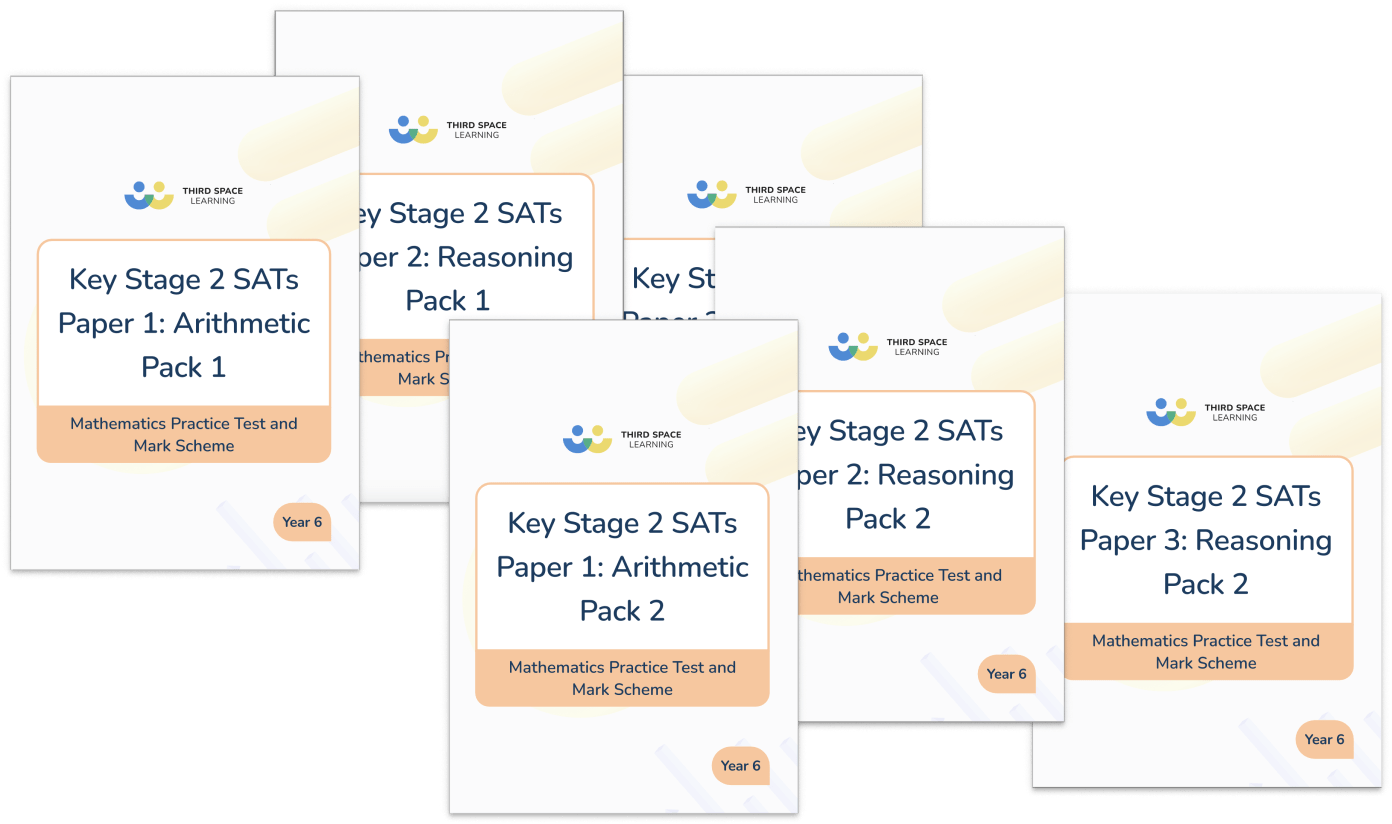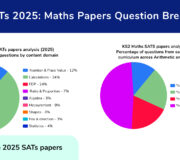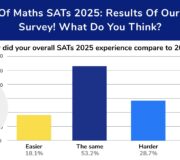What Are SATs And All Your Other Questions Answered: Everything You Need To Know About The KS1 And KS2 SATs (UK)
We’re here to make sure you understand exactly what to expect from the SATs, what they are, when children sit them, and indeed what’s the point of them.
We will mostly be referring to the KS2 SATs that Year 6 pupils take in May each year as these are the national curriculum assessments that are used for accountability. However we’ll also cover the KS1 SATs which are now optional for Year 2 pupils.
Each of these sets of exams is sometimes referred to as Year 6 SATs or Year 2 SATs respectively.
SATS 2026: STAY UP TO DATE
Join our email list to stay up to date with the latest news and free resources for SATs 2026. As usual our expert teachers will be on hand to provide one to one tuition support, revision resources, expert paper analysis, SATs teacher survey results and the SATs results 2026.
Let’s start with the basics.
What are SATs in the UK?
SATs are standardised assessment tests administered by primary schools in England to children in Year 2 and Year 6 to check their educational progress. They are one marker used by the government, and hence parents, of the quality of the education at a school. The setting and marking of SATs are carried out in UK schools by the Standards & Testing Agency.
KS1 SATs in Year 2
In May, some children children may sit their end of Key Stage 1 SATs in:
- Reading
- Maths
They will also be assessed by their teacher on science, writing, and speaking and listening. This however is known as teacher assessment judgements. It is not an official score for the SATs or national curriculum assessments.
KS2 SATs in Year 6
In Year 6 SATs are a more formal process of testing, and children will sit end of Key Stage 2 SATs in:
- English Reading
- English Grammar
- Punctuation
- Spelling
- Maths
They will also be assessed by their teachers on subjects including speaking and listening, writing and, in some cases, science.
By using teacher assessment, schools and the government can judge a child’s performance in a subject over a longer period. This means that teachers can to account for a child’s whole knowledge and ability in a subject, not just that which comes to the fore in a test environment.
FREE KS2 Maths SATs Practice Papers
Get ready for SATs with this set of 6 free SATs practice papers. Papers designed to help your Year 6 improve test skills and confidence in maths.
Download Free Now!What does SATs stand for?
SATs stands for Standard Assessment Tests.
SATs may be a common acronym that is used on many websites and in most school communications regarding the tests, but there are also several others phrases that a child’s teacher may use when referring to the SATs such as:
- national tests
- national curriculum tests
- national assessments
- national curriculum assessments
- SATs exams

Unlimited primary maths tutoring with Skye, the voice-based AI maths tutor.
Built on the same principles, pedagogy and curriculum as our traditional tutoring, but with more flexibility, reach and lower cost.
Join the schools already helping hundreds of primary pupils nationwide with Skye’s one to one maths tutoring.
Watch Skye in actionWhat does all the SATs jargon mean?
There are lots of SATs-related terms that can be confusing if you’re new to the topic. Here are some of the most common examples so that you’ll know your scaled score from your national standard come exam season.
SPaG: This refers to the spelling, punctuation and grammar tests that form part of the English SATs.
National curriculum tests: This is the official name for the SATs, but the vast majority of people refer to them simply by SATs.
National standard: This is the level that children are expected to reach in their SATs. This score is set at 100 for both KS1 and KS2.
Floor standard: If under 65% of a school’s pupils meet the expected standard in reading, writing and maths, and fail to make sufficient progress in all three subjects, the school will be considered below the floor standard.
Expected standard/level: A score of 100 means that your child is working at the expected standard.
Raw score: This is the number of actual marks achieved on the test.
Scaled Score: This is a score that is converted to allow SATs results to be compared year on year. This helps to take into account particularly difficult test years and other factors.
Age-standardised test scores: Standardised scores are a way for parents to understand how their child did compared with other children who were born in the same month as their own.
League tables: These are produced by the Department for Education and they allow primary schools to be ranked by many different measures.
The DfE: This stands for the Department of Education, and this is the part of government responsible for all things education.
What are SATs for?
Predominantly, SATs are used as a way for both parents and teachers to learn more about a child’s academic strengths and weaknesses. They give teachers the chance to see how children are doing in comparison to their peers not only within the same school but also nationally.
SATs are a useful tool to see how well a child has progressed from KS1 to KS2, and they also give secondary schools a base to compare against when the time comes for your child to leave Year 6 and make the journey up to KS3!
Headteachers, Local Authorities and the Department for Education also use SATs data to identify which primary schools are excelling, and which may be struggling.
Thanks to this available information, schools that are doing well can share what they are doing well with other schools to improve teaching on a much wider scale.
SATs accountability rests with the school. As it says on the DfE website SATs “are used to measure school performance and to make sure individual pupils have the support that they need as they move into secondary school.”
Does every child have to sit SATs? Are they compulsory?
Yes, SATs are compulsory. If your child is in Year 6 they will have to take the Key Stage 2 SATs which are compulsory for all Year 6 pupils (usually 11-year-olds) in England.
In 2017 the Department for Education announced that the Key Stage 1 SATs would be non-statutory from 2023 onwards. Schools can now choose whether or not they administer the KS2 SATs to their Year 2 pupils. Schools do not have to report on the results of KS1 SATs.
Some people choose to withdraw their children from SATs. Speak to your headteacher if you are concerned about your child sitting the tests this year. Most schools try to make it a relatively pain-free procedure for children. After all, it’s the school that is being tested.
Are SATs important?
Whilst there is a debate in the education world that SATs are more important for a school than they are for an individual child, it is worth remembering that there are no direct consequences of a child ‘failing their SATs’.
Pupils don’t need to retake the exams, and you can rest assured that no prospective employer will worry about a ‘below expected standard’ SATs result.
They can be a good measure of progress & can identify learning gaps
SATs will help both parents and teachers to gauge the progress that a child is making. This enables teachers to identify areas where a child may need additional help, and then arrange for additional support to be provided either in the classroom or via outside assistance.
Secondary schools often use SATs to set for maths and English
Most secondary schools look at Year 6 SATs results as part of the decision process when grouping students into sets or streams.
Alongside Year 7 CAT exams, SATs results will help your child’s secondary school to put them in the right set to ensure that they get the most from their time the
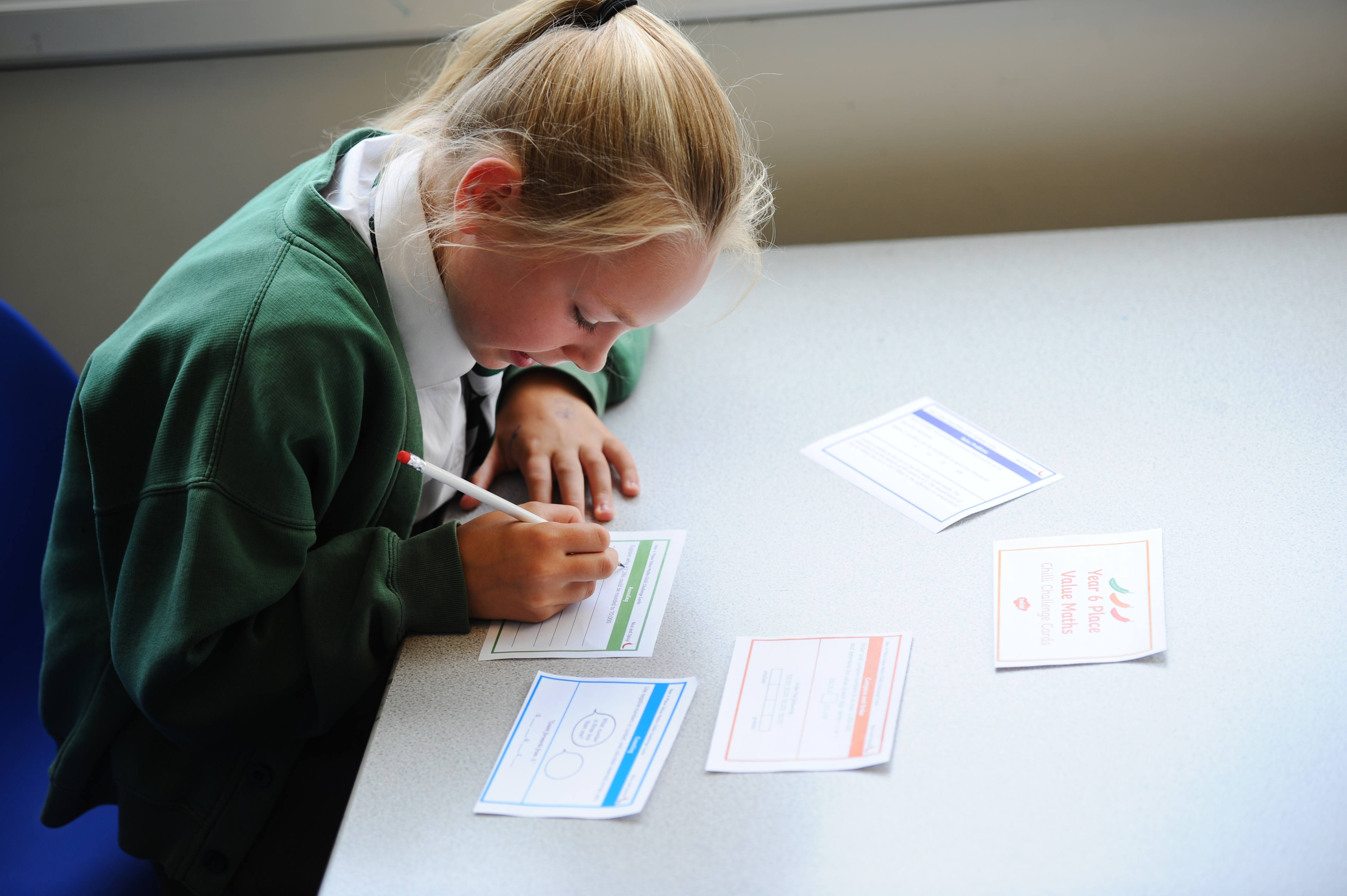
Without the SATs, it would be difficult for schools to know whether to push and challenge a child, or whether they need some help in maths, English and other subjects.
SATs are the measurement used in the school league tables
As a parent, chances are that when deciding on which primary school you would send your child to, you looked at the local league tables.
Schools are ranked by the percentage of students who reach the expected standard in SATs. Nationally this is expected to be around 65%. And, the percentage that exceeds the expected standard.
These tables show you how well a school is performing against others in the local area, but it is important to realise that SATs results and the league tables are not the only things to take into consideration when choosing a school. They don’t tell you how well the students in the school perform in other, non-tested subjects, how many extra-curricular activities your child can take part in or how many staff members are on hand for example.
What are the SATs tests like?
SATs may present you with a mental image of your child sitting in a large hall with row after row of desks covered in pens and paper. But, this is not the case.
For the upcoming SATs, as in any other year, Year 2 and Year 6 pupils will likely sit SATs in the same classroom they have been learning in all year. This may vary from primary school to primary school. If you are interested in finding out more, talk to a teacher.
While the papers are designed to test children’s knowledge, they consist of questions that are similar to the ones students have seen in class or end-of-year tests in previous years.
The KS2 SATs test techniques, skills and knowledge gained not only from Year 6, but throughout the entirety of Key Stage 2. Most years, our analysis of the maths tests shows that at least 50% of the content tests topics learnt by the children in years 3 to 5 at primary school.
What will be in the KS1 SATs papers for Year 2?
If a school decides to go ahead with KS1 SATs, the papers will likely follow this format.
KS1 maths SATs
- Paper 1 is an arithmetic test which should take around 15 minutes. It will consist of 25 marks.
- Paper 2 involves reasoning, problem solving and mathematical fluency. This paper has 35 marks available, will last for roughly 35 minutes, and contains a variety of question types.
KS1 English grammar, punctuation and spelling SATs
- Paper 1 is a 20 word spelling test worth 20 marks which should take roughly 15 minutes.
- Paper 2 is a punctuation, grammar and vocabulary test. It comes in two sections of around 10 minutes each, and the paper is worth 20 marks.
KS1 reading SATs
- Paper 1 consists of a variety of texts totalling 400 to 700 words with questions placed at intervals throughout.
- Paper 2 consists of a reading booklet containing different passages. These will total 800 to 1100 words.
Each paper for the KS1 reading SATs is worth 50% of the available marks and should take up to 30 minutes. The texts in the tests cover a wide range of fiction, non-fiction and poetry.
What will be in the KS2 SATs papers for Year 6?
KS2 reading SATs
- One paper with questions that are based on passages of a text. Students get 1 hour to answer the questions on the reading test.
KS2 English grammar, punctuation and spelling SATs:
- The written element of the spelling, punctuation and grammar SATs consists of a grammar and punctuation paper which lasts for 45 minutes.
- There is also a 20-word aural spelling test which lasts around 15-20 minutes.
KS2 maths SATs:
- Paper 1 is the arithmetic paper which will last for 30 minutes. It will contain fixed response questions where children have to give the correct answers to calculations.
- Papers 2 and 3 will involve a wider range of question types including multiple choice, true or false and reasoning based. Both papers will last 40 minutes each.
When are the SATs 2025?
SATs for both KS1 and KS2 take part in May each year. There may be some variation on exactly when your child will sit them depending on their year group and school.
When are the KS1 SATs 2025?
There is no set date for the KS1 SATs, other than the fact that they will take place in May.
When are the KS2 SATs 2025?
Ordinarily, the dates for the KS2 SATs run over one week per school year.
It is during this time that your Year 6 child will complete 6 different tests, English for the first part of the week and maths for the second.
The 2025 KS2 SATs dates fall as usual in the second week in May. SATs in 2025 will be administered from 12 to 15th May 2025.
- Monday 12th May 2025: Spelling, punctuation, and grammar (Grammar/Punctuation Test) – 45 minutes
- Monday 12th May 2025: Spelling, punctuation, and grammar (Spelling Test) – 20 minutes
- Tuesday 13th May 2025: Reading Paper (English) – 60 minutes
- Wednesday 14th May 2025: Maths Paper 1 (Arithmetic) – 30 minutes
- Wednesday 14th May 2025: Maths Paper 2 (Reasoning) – 40 minutes
- Thursday 15th May 2025: Maths Paper 3 (Reasoning) – 40 minutes
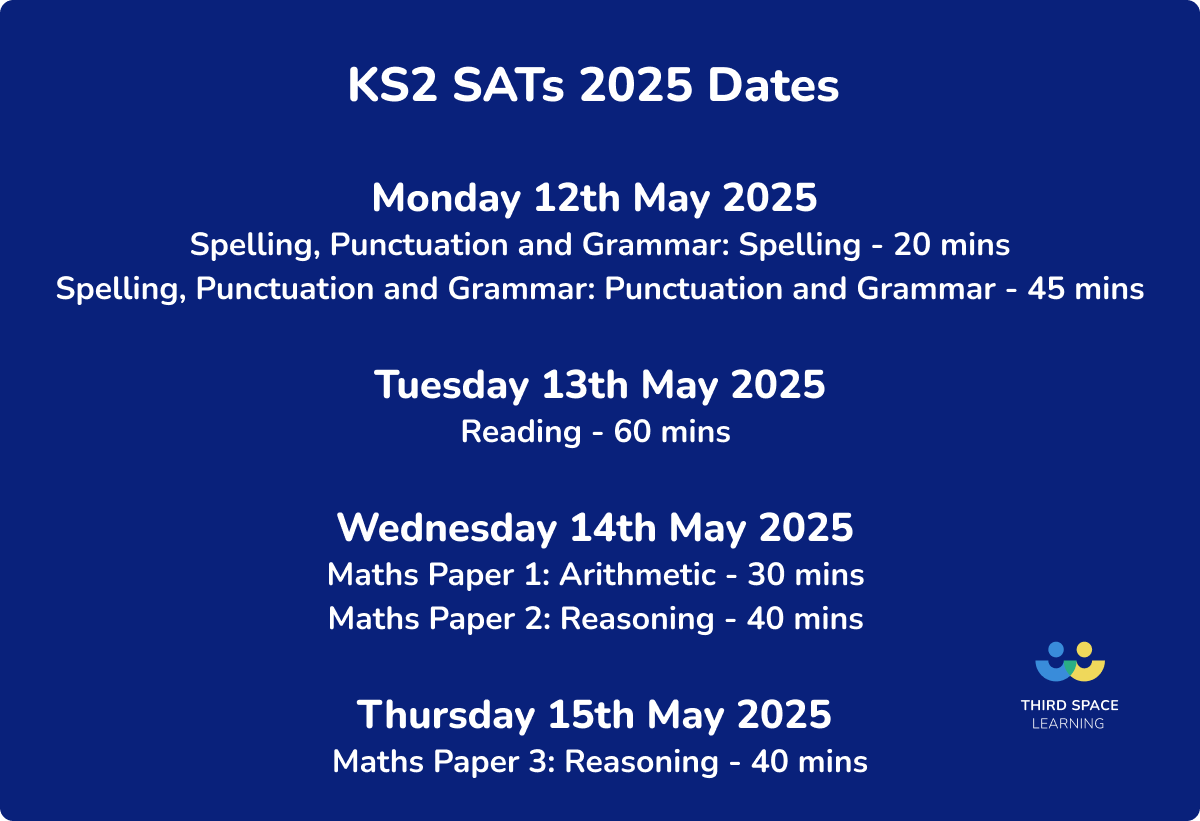
When are the SATs test papers available
Although teachers see the papers during the exams, there is a strict embargo from DfE on discussing the content of these papers each year for a defined period.
This is to allow any of the pupils on special consideration to sit their exams in fair conditions to the other Year 6 pupils in their school and nationally.
Generally, the embargo is lifted a week to a fortnight after the final Friday of SATs week.
GET THE ANALYSIS ON PREVIOUS SATS
SATs have been running in their current incarnation for 7 years; there were no government standardised assessments in 2020 and 2021 as a result of the Covid-19 pandemic. Get all the analysis and results from previous national assessments below.
And find out which are the top 20 year 6 maths revision topics to focus on this year.
– SATs papers 2025
– SATs results 2025
– SATs papers 2024
– SATs results 2024
– SATs papers 2023
– SATs results 2023
– SATs papers 2022
– SATs results 2022
– SATs papers 2019
– SATs results 2019
– SATs papers 2018
– SATs results 2018
– SATs papers 2017
– SATs results 2017
– SATs results 2016
When are the SATs results released?
The time the SATs results come out each year varies depending on the Key Stage, the school and a number of other factors.
When will the KS1 SATs results 2024 come out?
For Key Stage 1 children, SATs results day varies. You will be told whether your child is working at the expected standard in English, maths and science.
As teachers mark the KS1 papers internally following the mark scheme provided by the Standards and Testing Agency, it is up to schools to decide when and if they share the results.
Schools are not obliged to share the raw results of these tests with parents, but many include a summary of them in the end-of-year report.
When do the KS2 SATs results 2025 come out?
In 2025, results will be released to schools on Tuesday 8th July.
By this date, papers have been marked by the external examiners, and the raw marks converted into a scaled score.
Parents are told whether or not their child meets the expected standard along with both versions of their score. As well as this, your child’s school will share how their results compare to the national average.
Parents usually receive their child’s SATs results in the end-of-year school report.
Understanding the SATs results and SATs scores
One of the hardest things to figure out in Year 6 is an answer to the question “What do Year 6 SATs results mean?”
You may have heard several phrases discussed above like ‘scaled score’ and ‘expected standard’, but understanding what this all means for a child can prove tricky.
Since the introduction of the new national curriculum in 2016, children recieve scaled SATs scores. Fortunately, this isn’t as complicated as it sounds.
The scaled scoring method is used all around the world, and it simply means that your child’s raw score (the actual number of marks they achieved) will be converted into a scaled score which shows these marks converted out of a total number.
For KS2 SATs:
- Students can reach a top scaled score of 120 in each subject.
- The lowest scaled score they could possibly get is 80.
- A scaled score of 100 or more means that they have met the expected standard.
- A score of 99 or below means that they have not met the expected standard.
By scaling the score you can fix the cut off point at 100, dependant on how all children performed in the tests.
This can be used to show how children compare to their peers within their own school, across the country, and across the years over which this scoring system has been in place. This creates the fairest possible way to measure a school’s SATs improvements from 2016 onwards.
READ MORE: SATs results explained
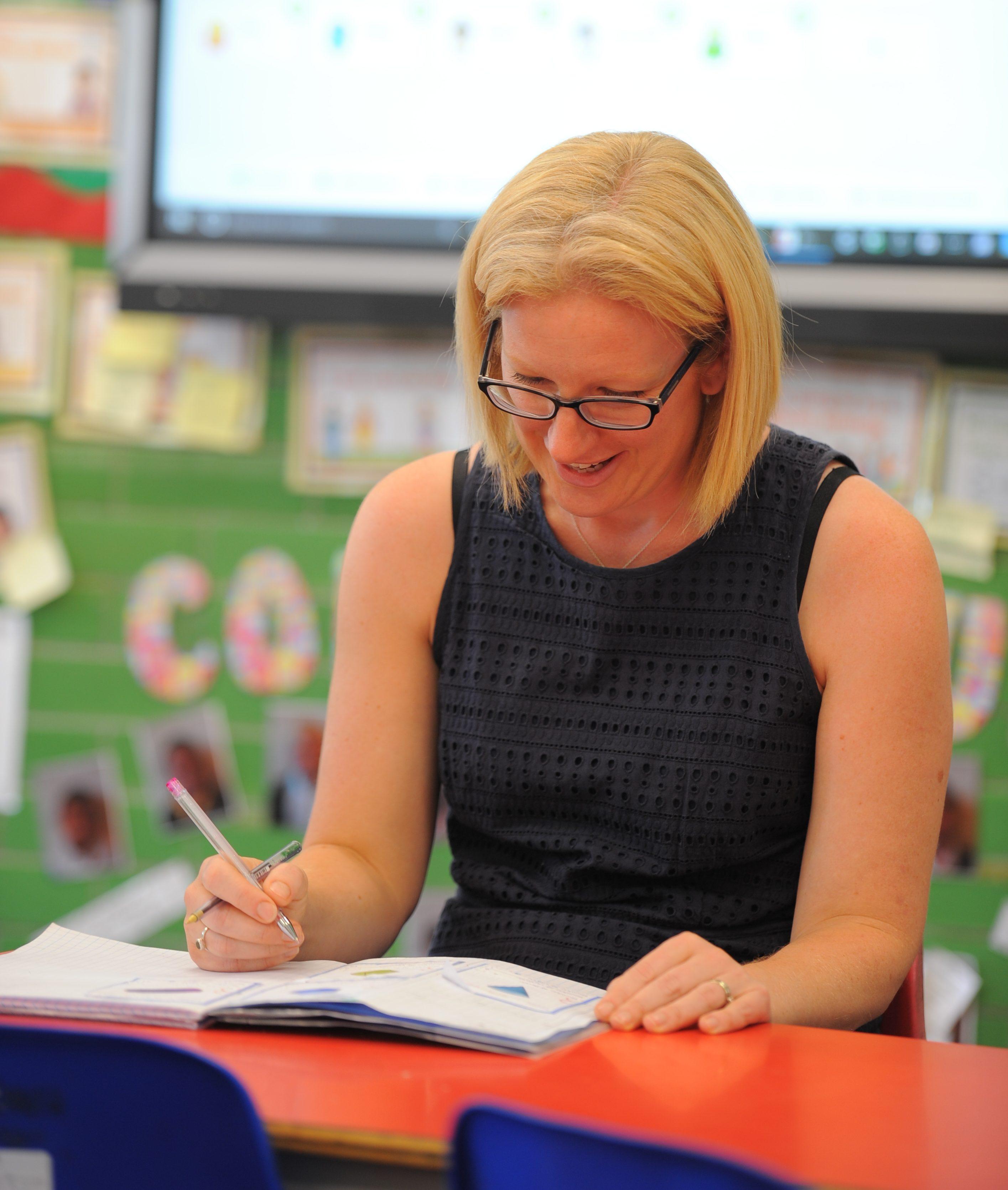
Changes to the national assessment framework
Before 2016, success in the Key Stage 2 national assessment tests was measured in levels rather than the current scaled score. Within one family there may be children who’ve experienced two different assessment regimes.
The newer tests were designed to ensure that there was only one set needed for each subject, and each test included a small number of questions which were specifically designed to test the most able pupils. Therefore, this removed the need for the old level 6 tests.
Looking for more bespoke personalised support?
Every year, Third Space Learning prepares over 10,000 pupils across the UK for their KS2 SATs using targeted one-to-one online maths tuition. Thanks to the feedback and learnings from the hundreds of thousands of previous pupils the Year 6 SATs revision programme is now world beating in its approach to addressing gaps in students’ maths knowledge.
It follows a rigorous programme where each lesson builds on the next and offers loads of supported practice in SATs questions along the way. The result is that by the time pupils sit their SATs they feel confident and prepared. Over 50% of the pupils we support are in receipt of pupil premium and we help target pupils from a range of backgrounds – disadvantage is no barrier. Get in touch with us to find out the impact we can have with your pupils at an affordable rate.
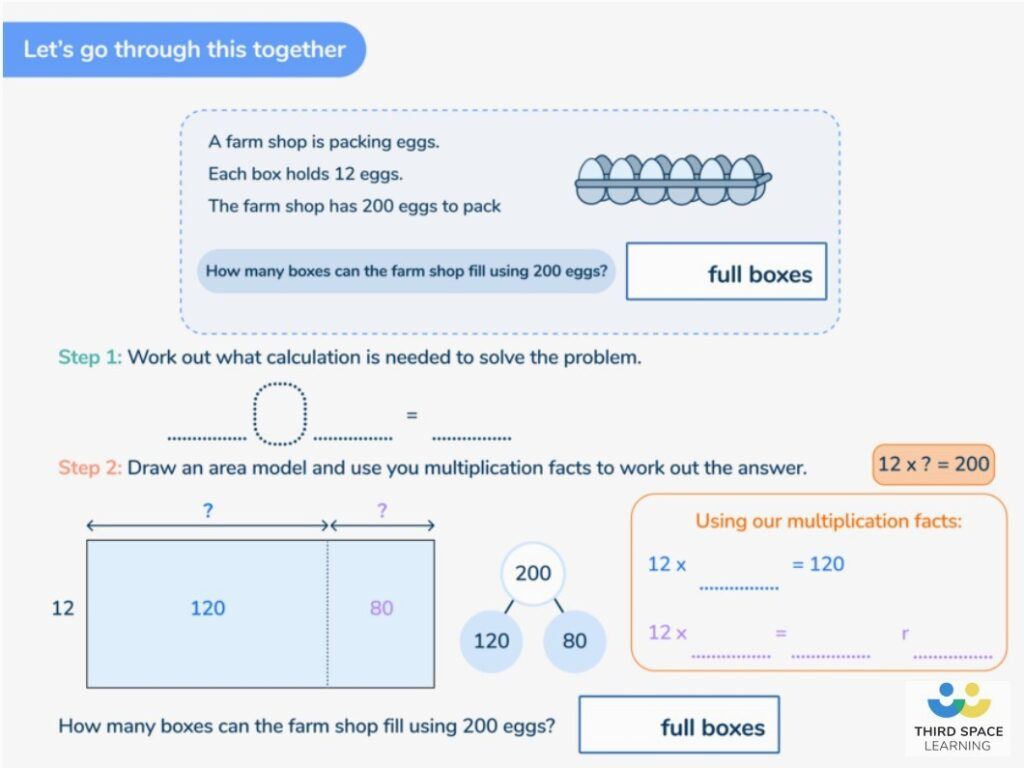
Top tips for improving children’s experience and performance in SATs
- Encourage regular practice: Set aside dedicated time each day for maths practice, focusing on KS2 SATs revision topics and skills that will be assessed in the SATs.
- Use practice papers and questions: Familiarize students with the format and style of the maths SATs by working through practice SATs papers and SATs questions. You can also find all the past papers on gov.uk.
- Focus on problem-solving strategies: Teach students various problem-solving strategies, such as breaking down complex problems into smaller steps, drawing diagrams such as bar models or looking for patterns.
- Identify and address knowledge gaps: Regularly assess students’ understanding of key concepts and provide targeted support and maths interventions to address any gaps in their knowledge.
- Make maths engaging and relevant: Use real-life examples, and in the final weeks especially, you can make SATs revision feel easy with interactive activities and maths games.
- Collaborate between school and home: Maintain open communication between the school and teachers to ensure a consistent approach to maths education and to address any concerns or challenges promptly.
- Highlight the predictability of the arithmetic paper: With good mental maths skills and lots of fluency practice using resources like Fluent in Five children can capture a lot of marks early on before the greater unknowns of the two reasoning papers.
- Reassure children that it’ll all be fine. It always is. In the midst of all the SATs preparation, things can seem quite hectic to a young mind. Read our Mental Health and Wellbeing SATs guide for ideas on how to keep calm for SATs.
DO YOU HAVE STUDENTS WHO NEED MORE SUPPORT IN MATHS?
Skye – our AI maths tutor built by teachers – gives students personalised one-to-one lessons that address learning gaps and build confidence.
Since 2013 we’ve taught over 2 million hours of maths lessons to more than 170,000 students to help them become fluent, able mathematicians.
Explore our AI maths tutoring or find out about year 6 SATs for your school.



